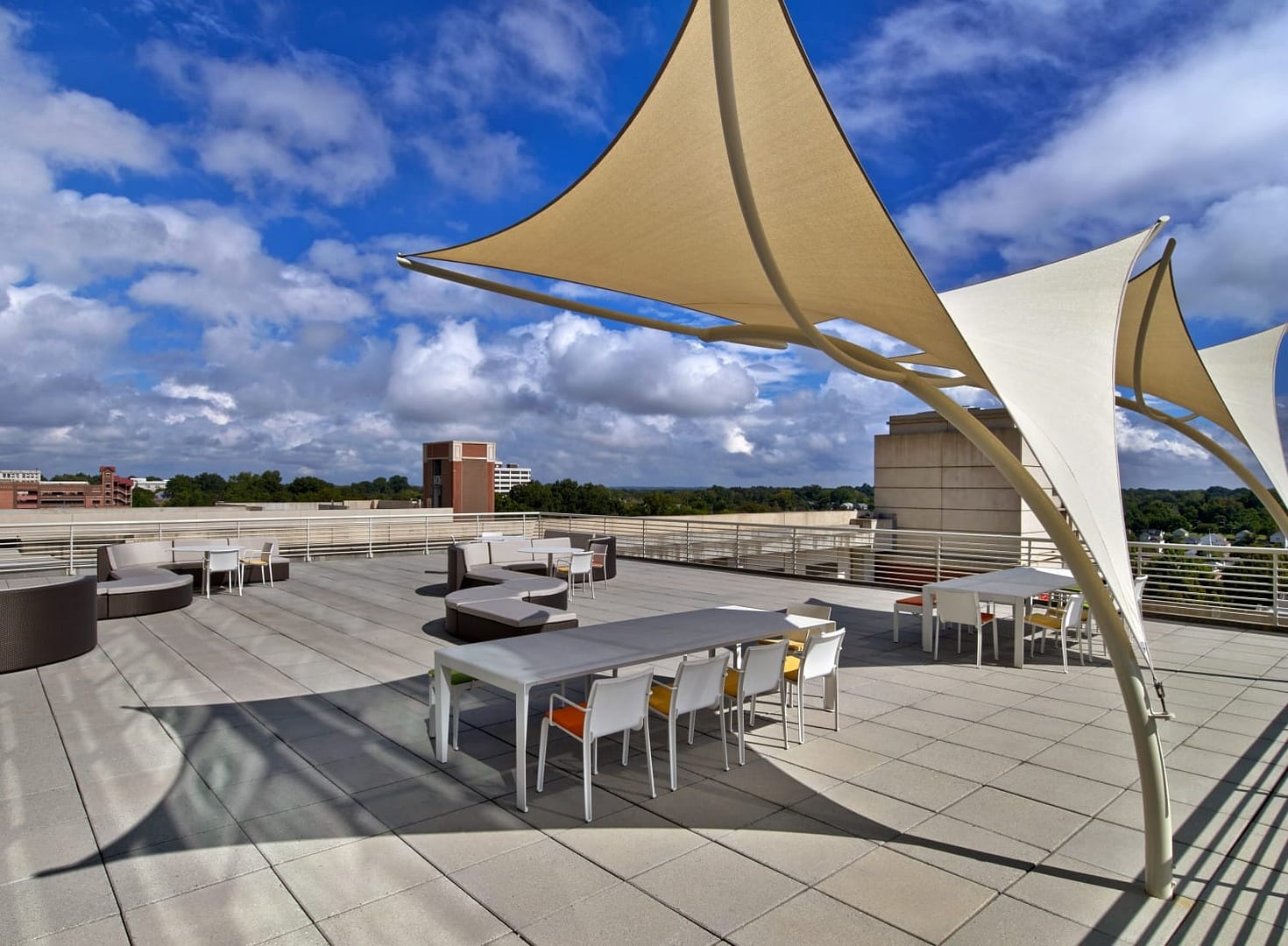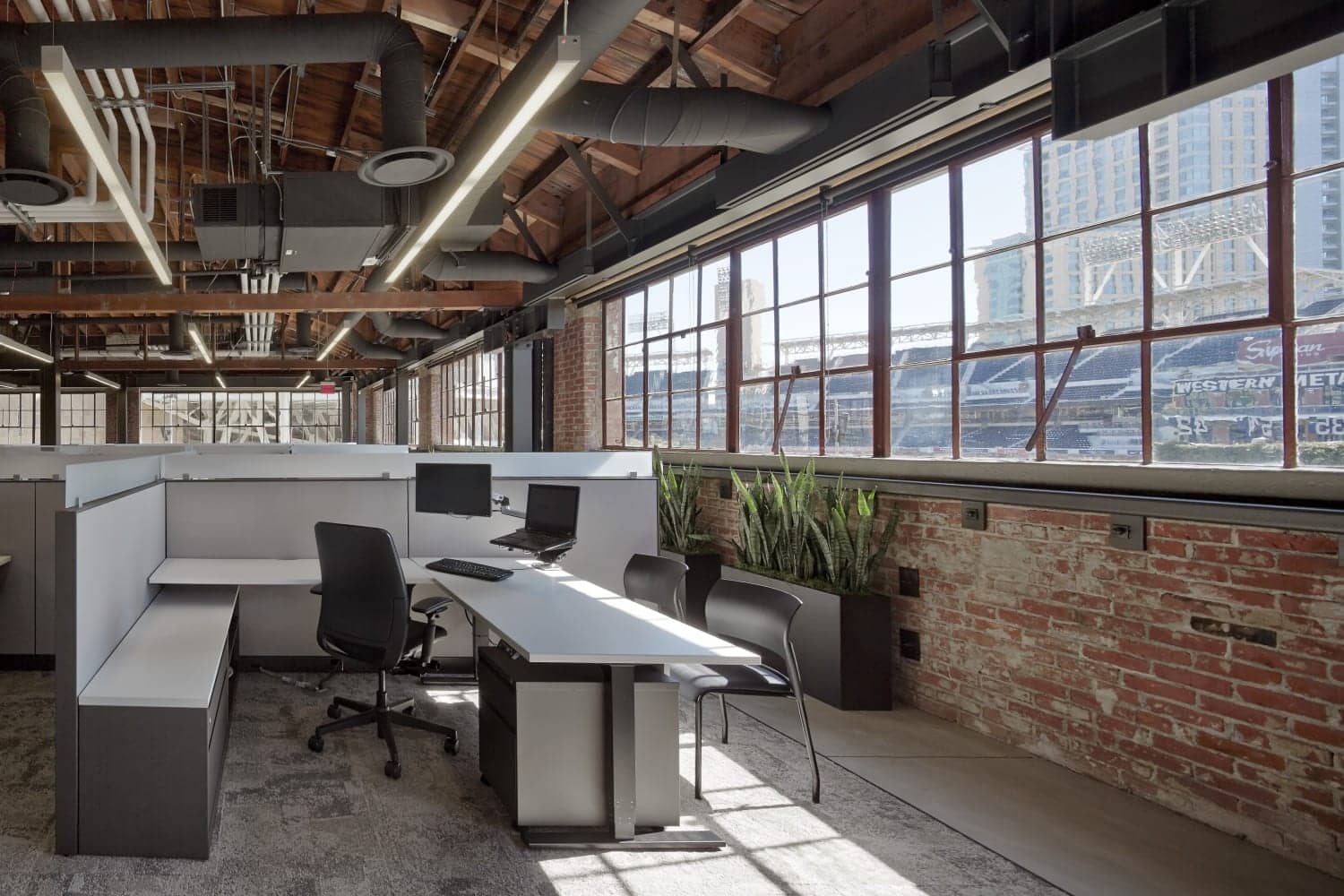By Amy Groome, WELL AP | Designer
Have you ever been in an all-day strategy meeting in the same conference room with the doors closed and felt that you were practically brain-dead by 4:00 PM? We all have experienced the stuffy, stale air that accumulates after too many hours in one conference room, but beyond some mild discomfort, don’t take it too seriously.
According to healthcare researchers, humans breathe more than 15,000 liters (530 ft3) of air every single day, consuming approximately four times more air than food and liquid together. Not surprisingly, all of this air we are constantly taking in has a significant impact on our body’s ability to function throughout the day, and sub-par air is more detrimental than many of us realize. A recent study by Berkeley Lab “found that moderately high indoor concentrations of carbon dioxide (CO2) can significantly impair people’s decision-making performance.” At levels of 1,000 ppm, our information utilization and strategic thinking begin to dip below average, and at 2,500 ppm test subjects begin to classify as dysfunctional in decision making performance.
To put these numbers in perspective, typical outdoor concentrations of CO2 are around 380 ppm, while indoor concentrations commonly go up to several thousand ppm. These numbers spike the highest in meeting and conference rooms, where we are typically doing most of our decision-making and make a great case for better ventilation systems in our buildings, and perhaps rethinking where we hold our more critical meetings altogether.
L.L. Bean was onto something in their recent “Be an Outsider at Work” study. Due to research-backed evidence that creative thinking is enhanced when subject to "fresh" air, their company culture supports the practices of “Weekly Check-Outs,” and “Blue Sky Brainstorm” sessions.
Beyond the concepts of biophilia and attention restoration outside, we simply need to breathe better air to have better ideas!
At IA, it is crucial that we understand how our indoor environment impacts creative and cognitive thinking. During the month of September, IA in San Francisco paired up with Senseware technologies to monitor the air quality in huddle and conference rooms, and some of the findings were rather surprising. After about 45 minutes in an enclosed huddle room, temperature and carbon dioxide levels began to spike, and during even longer group meetings would hit levels that could seriously impede performance. Continuous monitoring systems shine a light on the invisible forces impacting our health and performance, and in turn a company’s bottom line. This internal study was eye-opening and an opportunity for us to rethink where and how we meet (and to crack some windows).
When possible, it is ideal to coordinate with building engineers and facilities teams to discuss ventilation system maintenance and the cleaning programs that are in place. “Sick Building Syndrome” and “Building Related Illness” are costly for building owners and facility managers due to worker absenteeism, loss of productivity, and occupant lawsuits, so it is in everyone’s best interest to care about the air.
As designers, we can take many steps to improve air quality in the interior environment. Specifying low-VOC finishes, and paying close attention to Declare labels and Health Product Declaration reports is crucial. These labels more or less serve as the "nutrition facts" of manufactured products and can help us to precisely measure the health impact of a given space. Also, ensuring that the composite wood products we choose, including plywood, particleboard, and medium density fiberboard are Formaldehyde-free.
Indoor plants can also be great toxin filters for the interior environment, specifically species such as English Ivy for Formaldehyde and Gerber Daisy for Benzene from printing off-gassing. Before particulate matter and irritants come indoors, entry walk-off mats are crucial for stopping dust and dirt from collecting inside.
Standards such as The WELL Building Standard, Fitwel, and the Living Building Challenge serve as great roadmaps to improving our buildings’ indoor habitats. Ensuring the health of end users and ourselves helps us all breathe a little easier.
How important is the air we breath, and how can we as designers have an impact?




